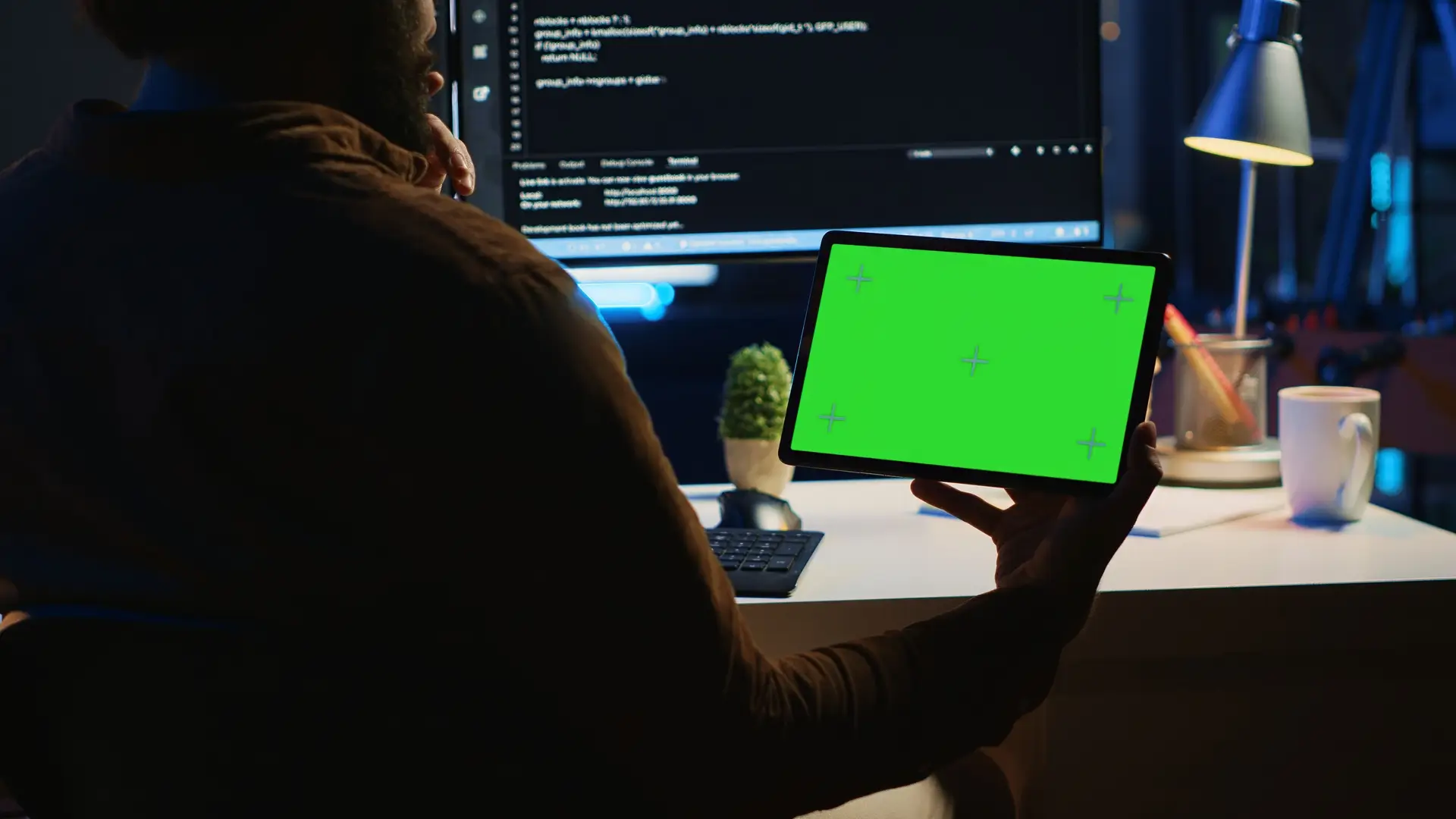The old requirement that you must own a Mac to dive into iOS development has long been a big barrier. This was especially true for Windows users. However, today’s world offers ubiquitous Cloud Mac services. We also have advanced cross-platform tools. Because of this, the dream of building a full iPhone or iPad application on your Windows PC is now a complete reality. This comprehensive guide will show you precisely how to create iOS app on Windows. We will cover everything you need. This starts with setting up your environment. It finishes with the final App deployment to the App Store.
It’s crucial to understand one key point. A Mac is still required for the final steps. This includes compilation and submission. This is due to Apple’s mandatory use of the Xcode IDE and its proprietary tools. Still, a Windows machine can handle 90% of the entire development lifecycle. We’ll explore the practical workarounds. These solutions allow you to effectively create an iOS application on Windows. You can handle design, coding, testing, and even the final build process. By leveraging cloud services, virtualization, and modern frameworks, you can bypass the need. You don’t need an expensive Mac until the final, crucial step. This informational resource is your blueprint. It is the key to successful iOS app development on Windows.
This post will teach you how to make ios app on Windows without breaking the bank. It is possible to do professional work without buying new Apple hardware.
Why can’t you create iOS App on Windows?
Before diving into the solutions, it’s important to grasp the core challenge. Why can’t you natively create iOS app on Windows? Apple’s ecosystem is highly controlled. This is for a good reason. It ensures a consistent and secure experience for all users.
The Xcode Tool is Required
The biggest roadblock to create iOS app on Windows is Xcode. This is Apple’s proprietary Integrated Development Environment (IDE). It is not optional for native development. Xcode is required for several non-negotiable tasks:
- Writing code in Apple’s native languages. This includes Swift programming and Objective-C.
- Accessing the official iOS SDK (Software Development Kit).
- Testing the app on the native iOS Simulator or a physical iPhone.
- Compiling the app into the final, distributable .ipa file.
- Signing the app with an Apple Developer Program certificate. This is needed for App Store submission.
Crucially, Xcode is only licensed to run on macOS. This means to truly build ios app on Windows, you must find a way to access a macOS environment. The solution is simple access, not ownership.
Option 1: Rent a Mac
This method is the most efficient and legally sound. It solves the “Mac problem” instantly. You rent a Mac in the cloud. This provides you with remote Mac access. You get a full, legitimate macOS environment. It runs the latest version. This setup meets all of Xcode’s requirements perfectly.
Using Remote Mac Services
Cloud Mac services remove the need to buy and maintain your own hardware. This saves you money and time. You simply connect from your Windows PC. You then use the remote Mac desktop. It feels exactly as if it were locally installed. This is the simplest way to get up and running quickly.
Key Cloud Mac Options:
| Cloud Service | What You Get | Best Use For | Cost Estimate (monthly/hourly) |
| MacStadium | Dedicated Mac Minis | Professional CI/CD, constant use | Starts around $109 per month |
| MacinCloud | Virtual Desktops (Hourly) | General development, flexible hours | Around $1 per hour, or $30+ monthly |
| AWS EC2 Mac | Compute Instances (M-Series) | Enterprise CI/CD, high scalability | Pay-per-second, higher hourly rates |
By utilizing these Cloud Mac services, you can perform the critical final steps. You can run Xcode remotely. You compile the app. You complete the submission. You do all this from your Windows computer. This is the gold standard method. It is highly recommended if you need full native access. It allows you to legally create ios app on Windows.
Option 2: Use Virtual Machines
A less reliable and often legally questionable route is to virtualize. This means trying to run macOS on your Windows hardware. This is also called a “Hackintosh” setup.
The VM Solution
Virtualization software like VMware Workstation or Oracle VirtualBox is used. This allows you to create a virtual machine (VM) on your Windows PC. You then attempt to install macOS within it.
- Pros: You control the entire environment. There is zero recurring rental cost.
- Cons: It often violates Apple’s End User License Agreement (EULA). This is a legal risk. Performance is generally very sluggish. Compilation and simulation are resource-intensive tasks. Stability issues are extremely common. New versions of macOS or Xcode often break the setup.
This path is discouraged for professional iOS app development software for Windows. This is because of the legal grey area and technical instability. It’s better to use the controlled cloud environment.
Option 3: Use Cross-Platform Tools
You can write most of your app’s code and logic on Windows. You use development frameworks for this. They abstract away the native iOS code. They only need a Mac environment for the final build. This is the most popular way to develop iOS applications on Windows today.
1. Flutter (Dart Language)
Flutter was developed by Google. It uses the Dart language. It builds natively compiled applications. These apps work on mobile, web, and desktop. All this is from a single codebase.
- How it helps: You write all your code and design the UI on Windows. Code editors for iOS apps like VS Code work perfectly on Windows. It has excellent Dart support.
- The Mac Requirement: You still need to connect to an actual Mac. This is to generate the final iOS .ipa file. It is also needed to use the iOS Simulator for testing. This is easily done through a Cloud Mac service.
2. React Native (JavaScript Language)
React Native is an open-source framework developed by Meta. It enables you to build an iPhone app on Windows. It uses JavaScript and React.
- How it helps: The majority of the work is done on your Windows machine. This includes all the JavaScript coding. It uses standard Windows-compatible tools.
- The Mac Requirement: A Mac is mandatory for the final build process. You can use the Android emulator on Windows to test the look. However, you cannot simulate an iPhone without an Apple machine.
- The Constraint: Advanced, Apple-specific features are harder to use. Features like ARKit often require custom native code modules. This forces you to work with Swift programming or Objective-C directly in Xcode. This makes the Mac connection necessary.
3. Other Frameworks
Other frameworks exist. These include Xamarin (now .NET MAUI). They allow Windows iPhone app development using Visual Studio. However, they, too, ultimately require an Apple machine. This is needed to compile the final application. All roads lead to a Mac for the final compilation.
Your Step-by-Step Plan
To successfully create iOS app on Windows without buying a Mac, follow this optimized workflow. This is the professional way to proceed.
1. Set Up Windows
- Code Editor: Install a capable Code editor for iOS apps. Use Visual Studio Code or the full Visual Studio IDE.
- Cross-Platform Choice: Select a framework like Flutter or React Native. Complete all necessary setup. Install SDKs and set up environment variables.
- Local Testing: Test your code locally on your Windows machine. Use the Android emulator for initial testing. This checks logic and basic UI. This minimizes the expensive cloud-Mac usage time.
2. Access the Remote Mac
- Cloud Selection: Choose a reliable Cloud Mac services provider. This ensures a stable environment.
- Connection: Use a Remote Desktop Protocol (RDP) or VNC client. Connect from your Windows PC to your remote Mac instance. You now have full remote Mac access.
3. Finalize and Launch
- Finalize Code: Transfer your finished codebase to the remote Mac. Use Git for secure transfer.
- Open in Xcode: Open the project in Xcode on the remote machine. This is where you finalize platform-specific settings. You integrate Apple-only features. You ensure complete iOS development compliance.
- App Deployment & Testing: Run the app on the native iOS Simulator. Use Fastlane and Continuous Integration (CI) tools. This automates the build and testing pipeline. Using GitHub Actions that run on macos-latest is a common, professional practice. This reduces manual time on the remote desktop.
- Submission: Use Xcode or tools like Fastlane to archive the build. Sign it with your developer certificate. Upload it to App Store Connect. This step is non-negotiable. It absolutely requires access to macOS.
This streamlined approach is highly efficient. It allows a team to mostly perform Windows iPhone app development. They use the remote Mac access only for the legally mandated final stages.
If your organization needs full-service assistance for this complex setup, a consultation is smart. Talk to DevSphere Technologies for expert mobile app development services.
Advanced Topics
The ability to create ios app on Windows opens up many possibilities. However, it’s important to understand the full landscape.
Understanding Compatibility
The promise of cross-platform tools is great. But developers must still be aware of Windows compatibility. While the code editor works fine, the build tools are different. Your Windows machine is running a different operating system. This is why the Mac step is a bottleneck.
The Role of Swift
Many people want to know how to program iOS apps on Windows using Swift. Swift programming is Apple’s modern language. The Swift team has done great work. They have ported the Swift toolchain to Windows. This means you can write and run simple Swift programs on Windows. However, building a full app requires the iOS frameworks. These frameworks are only available in Xcode. This confirms the need for remote Mac access.
Avoiding Instability
For those asking, can you create iOS apps on Windows with virtualization? Be careful. Virtual machines use Emulators for iOS development. These are often unstable. The remote cloud method is superior. It uses real Apple hardware. It ensures a stable development environment.
Getting Expert Help
The path to successfully create ios app on Windows often involves smart decisions. This relates to technology and resource management. Companies often choose to outsource. They seek expert guidance to navigate these complex waters.
Getting Expert Help
Your project might require complex, native features. It may have tight deadlines. In these cases, trying to write an iPhone app on Windows through virtualization can become costly. It is often counterproductive. Engaging with an experienced technology partner becomes invaluable here.
For organizations looking to build high-quality mobile applications, professional assistance is smart. Considering help for iOS mobile app development can accelerate the timeline. It helps ensure industry best practices. This is especially true if the app involves a backend. That part might require custom web development expertise. This is needed to build robust APIs and server-side infrastructure.
Strategic Guidance
Making the right technology choices is key. Should you commit fully to cross-platform tools? Or should you focus on native iOS development via cloud Mac? This decision falls under IT Consulting. Expert advice ensures your chosen method for how to program iOS apps on Windows aligns with your budget. It also ensures it aligns with your long-term business goals. This strategic guidance saves time and money.
To explore how these professional services can help your specific project, you can easily get a Quote from a specialized development firm. Take the next step today.
FAQs
How to Create iOS App on Windows?
The most effective method is using frameworks like Flutter or React Native. You write the majority of the code on your Windows PC. Then, you leverage Cloud Mac services like MacinCloud. This gives you remote access. You then use this legitimate macOS environment. This allows you to compile the application with Xcode and perform final testing. This bypasses the need to buy a physical Mac. It also meets Apple’s legal requirements for the build process.
Can I submit an iOS app from Windows?
No, Apple mandates that the final app archive, code signing, and upload to App Store Connect must be performed. This has to be done using Xcode, which only runs on macOS. However, you can use CI tools like Fastlane. These are combined with a cloud-based macOS runner. This helps to automate the submission process. This effectively triggers the Mac-required steps from your Windows machine.
How to run an iOS app on Windows?
You cannot natively run an iOS app on any version of Windows. This includes Windows 8. They use completely different operating systems and hardware architectures. The best alternative for Windows users for testing is the Android emulator. This works if you use a cross-platform framework. Alternatively, you can run the native iOS Simulator by connecting to a remote Mac. This uses Emulators for iOS to show the screen.
Can I develop Swift apps on Windows?
To write an app using Swift programming on Windows, you can install the official Swift toolchain. This has been ported for Windows compatibility. You can use an IDE like Visual Studio Code. However, for all the Apple-specific frameworks and the necessary compilation, you still need to integrate with macOS. This environment must be running Xcode. You typically access it via remote desktop to a Cloud Mac service.
Can iOS apps be run without a Mac?
While you cannot natively run or compile an official iOS app without a Mac and Xcode, you can develop and test the core logic. You can also test the UI on a Windows PC. This is done by using frameworks like Flutter or React Native. Then, you can run an Android build on your Windows machine’s emulator. Services that stream the iOS Simulator from a remote Mac can also simulate the experience.



